In this article, Capt.
Dale A. Dye, U.S.M.C.
tells the tale of one Marine on the front line of this pivotal engagement.
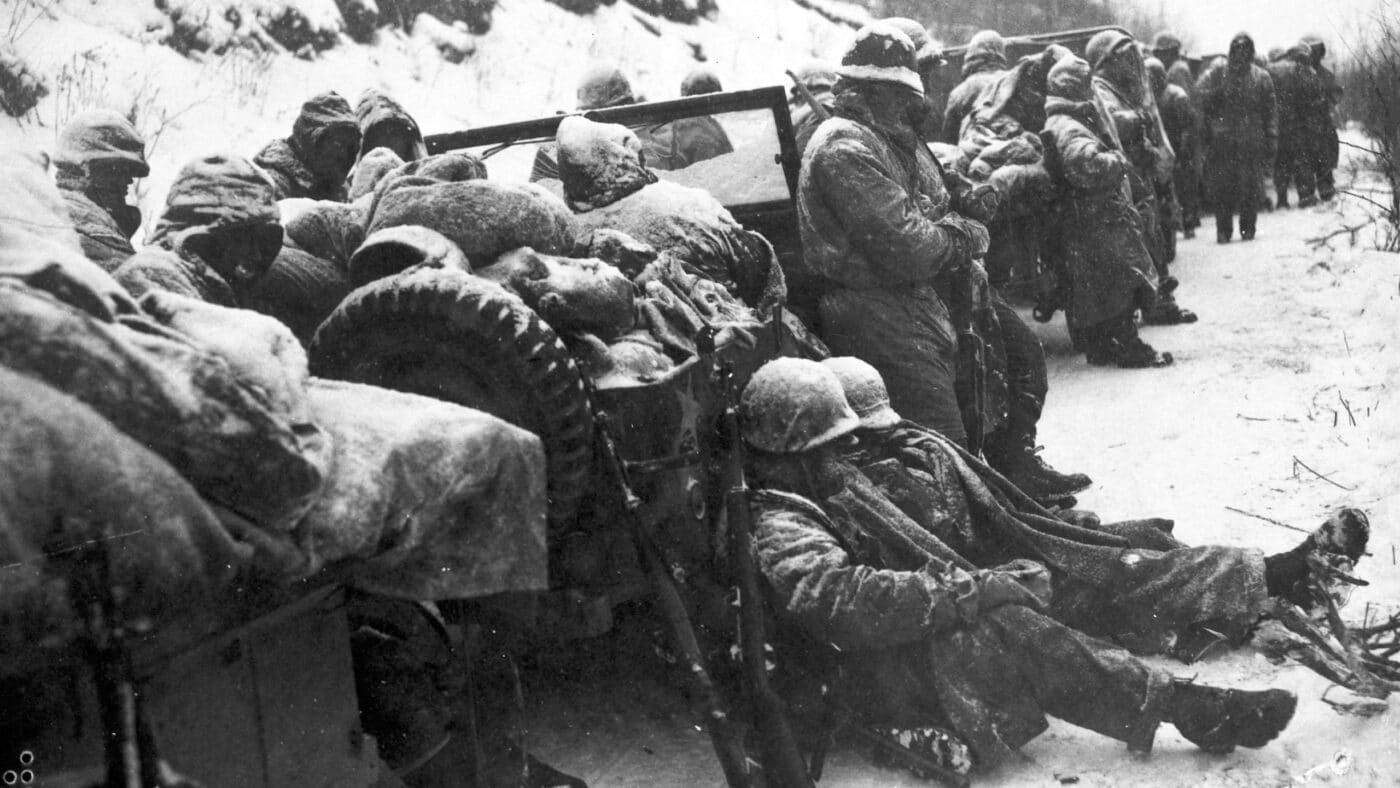
After five days of constant fighting against three Chinese divisions, Marines of the 5th and 7th Regiments, 1st Marine Division, rest before resuming the battle. Image: Sgt. F. C. Kerr/U.S.M.C.
He was introduced as a retired L.A. Sheriffs Department homicide detective.
Fine … but I was focused on the eagle, globe and anchor lapel pin he was wearing.
The ritual began as it generally does among two Marines meeting for the first time.
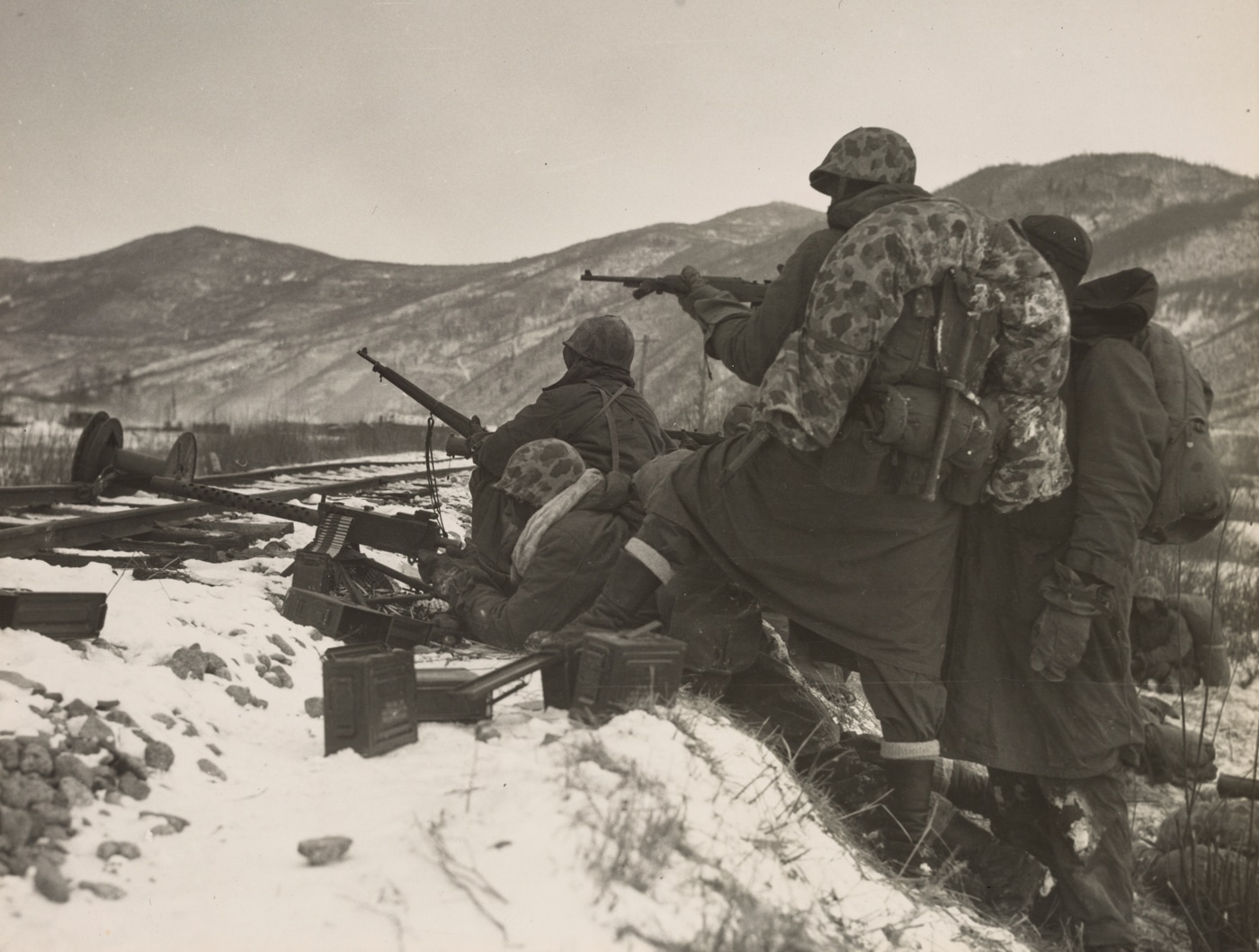
On December 7, 1950, these Leathernecks counter fire with fire when attacked by Chinese forces during the Division’s heroic breakout from the Chosin Reservoir area. Image: U.S.M.C.
Marine Corps, huh?
Yeah…
Me too.
Whered you go to boot camp?
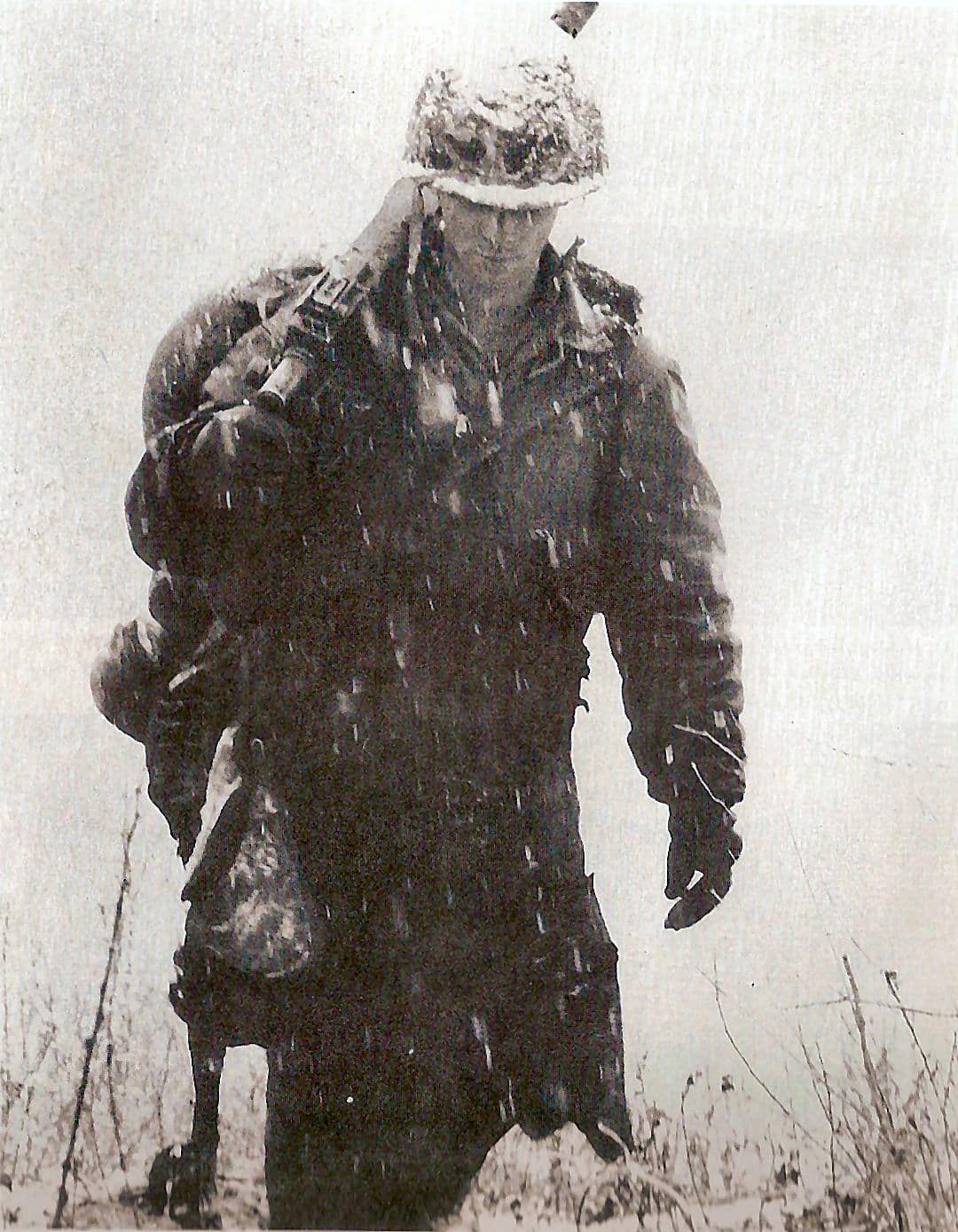
Through odd circumstances, Barry Jones bypassed boot camp entirely on the way to the fight in Korea.
Korea…
Red flags rose and I arched an eyebrow.
I mean where did you go through basic training?
Parris Island or San Diego?
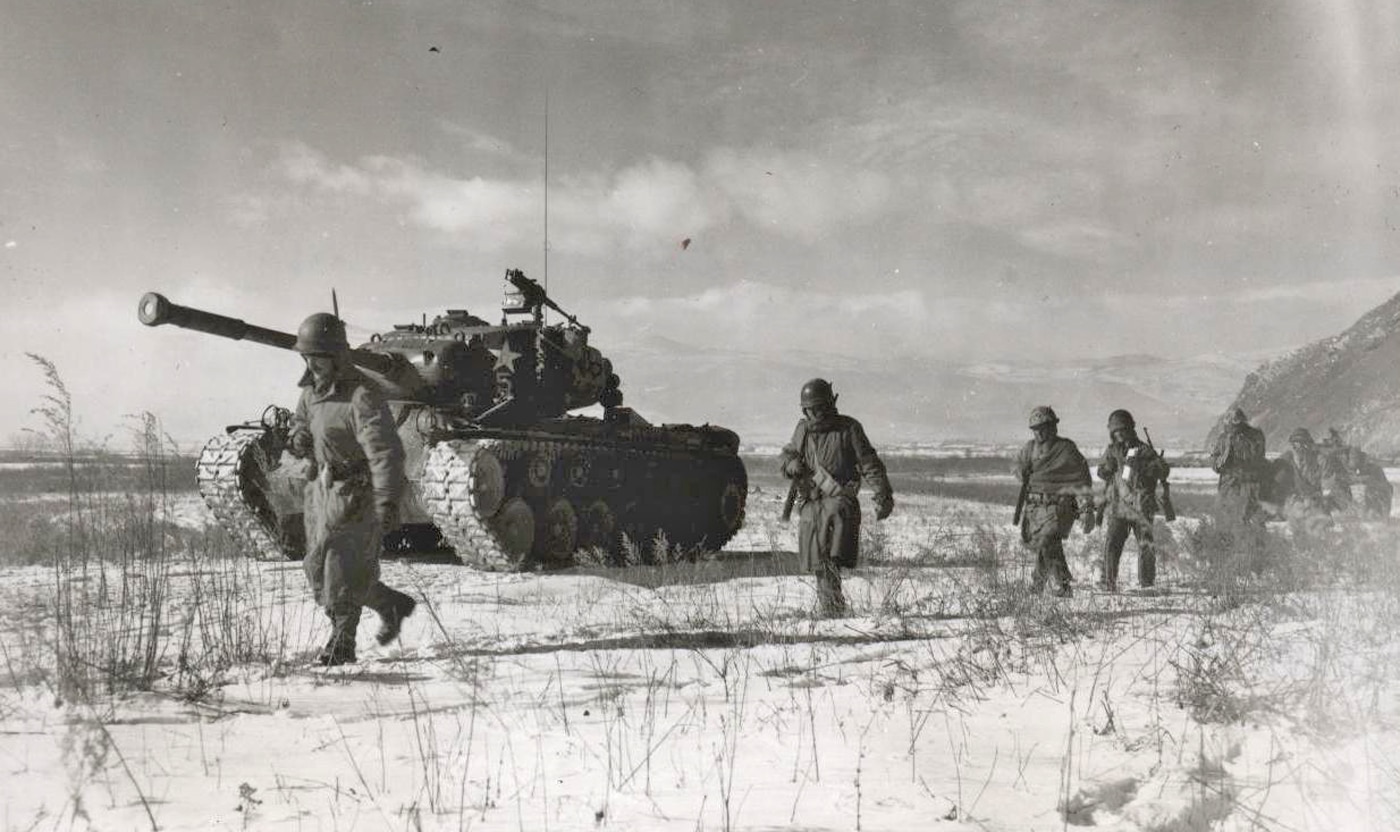
Marine riflemen and a M46 Patton tank move south between Hagaru-ri and Koto-ri during the Battle of Chosin Reservoir. Image: U.S.M.C.
I never went to boot camp.
I just went to Korea.
It was your basic OJT situation, Barry told me.
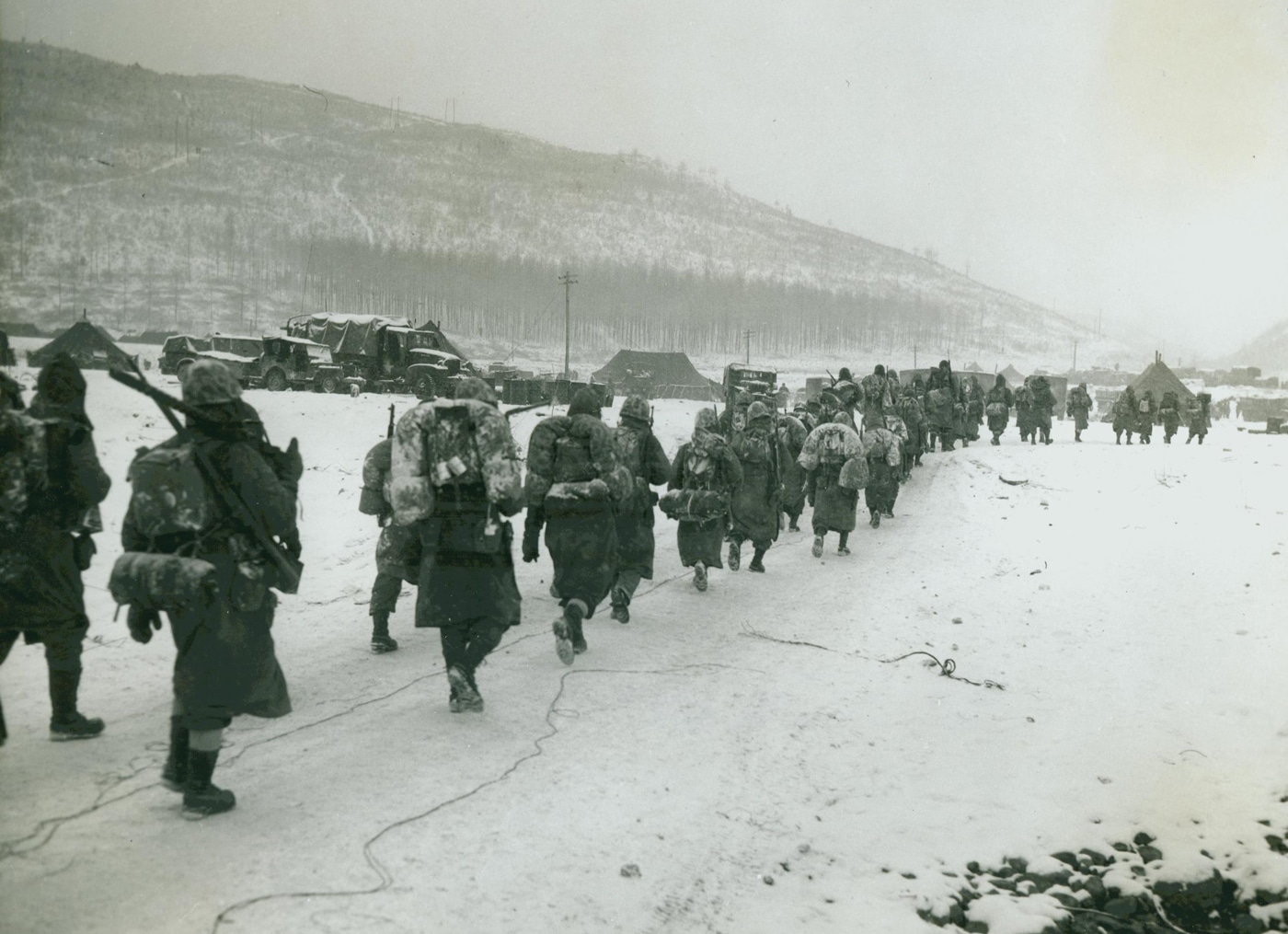
Marching through the snow, U.S. Marines move out of Koto-ri on December 8, 1950. The bitter cold was a constant companion making even common duties difficult.
Training we did not.
It was just west of a frozen body of water marked on maps as the Chosin Reservoir.
We called em Mickey Mouse boots, Barry recalled.

Yudam-ni, at the western extremity of the Chosin Reservoir, was the scene of early combat in the campaign. Marines had to fight their way to Hagaru while surrounded by the enemy. Image: U.S.M.C.
Big clumsy things like wed seen on cartoon characters.
Barry showed me a copy of a Stars & Stripes newspaper hed saved from sometime in December 1950.
A headline said Chinese Hordes Attacks U.N. Hard telling at the time how many … are in a basic horde, Barry chuckled.
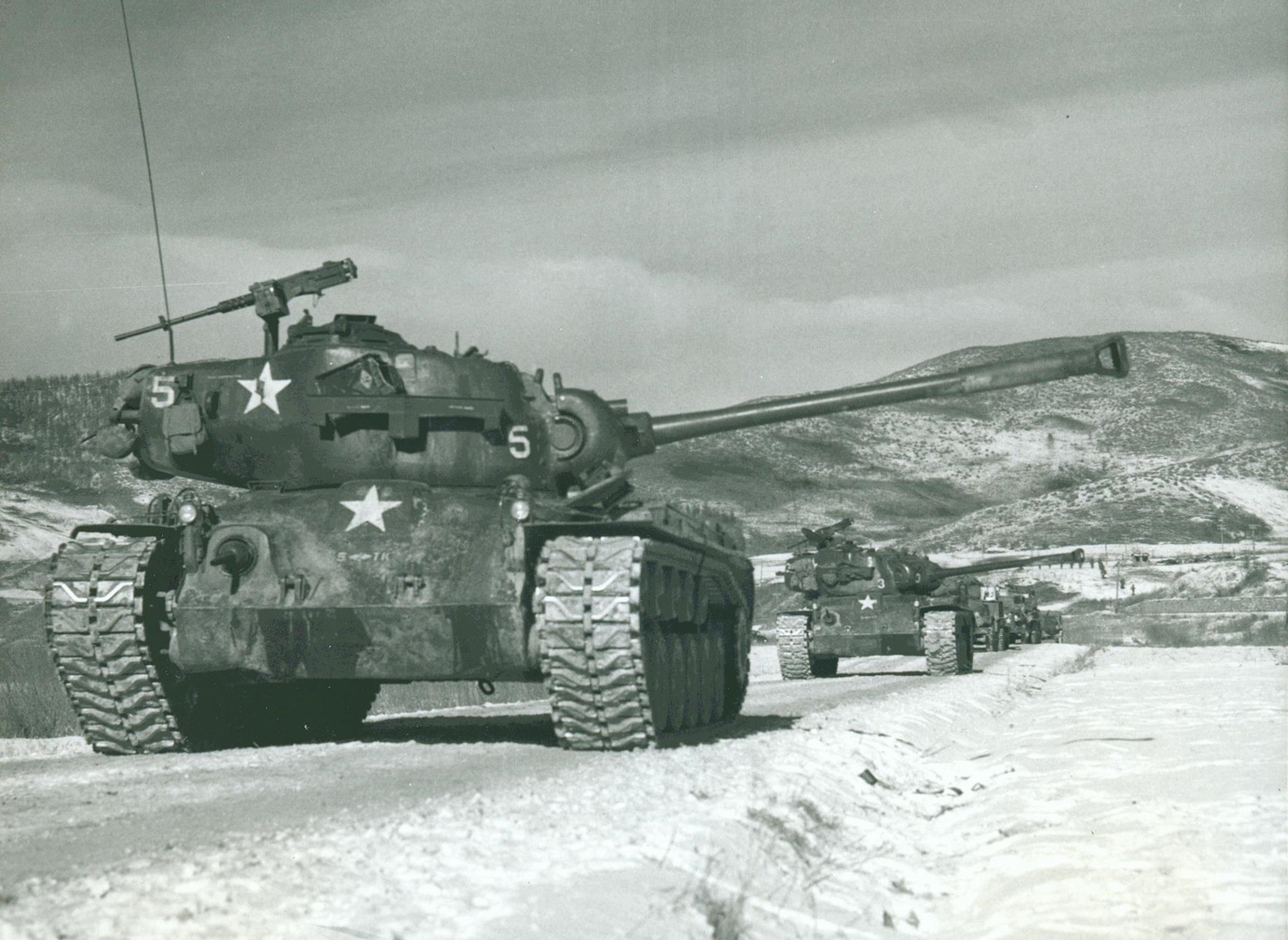
On December 6, 1950, M26 Pershing tanks move down the road from Hagaru-ri. Image: U.S.M.C.
They mainly just referred to it as the Frozen Chosin in the Freezin Season.
The Marines simply said they were attacking in another direction.
Barry Jones survived it all, despite some nasty shrapnel wounds and a couple of badly frozen toes.
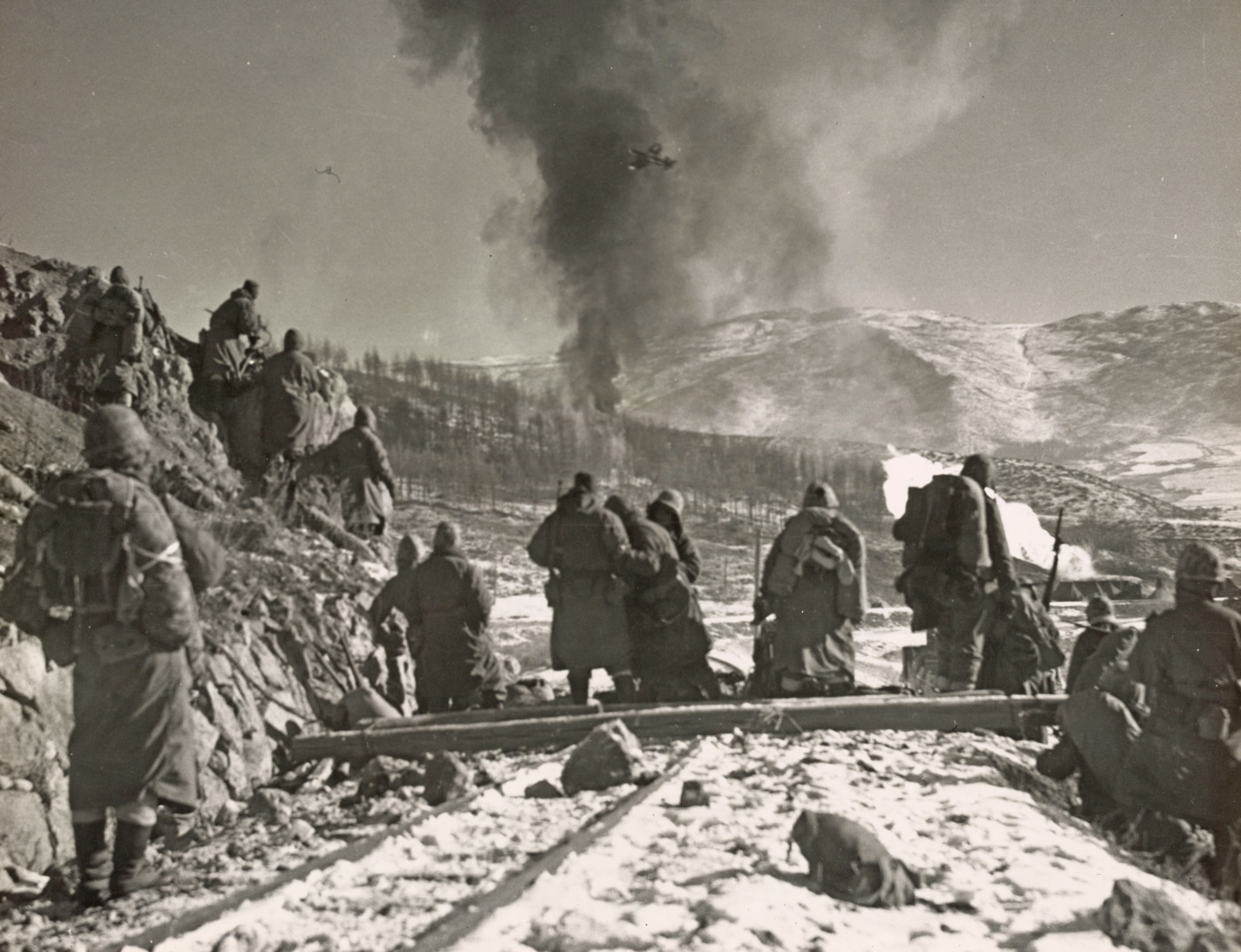
A U.S. Marine F4U Corsair provides close support to ground units in contact with the enemy. The plane zooms skyward after dropping napalm on Chinese troops. Image: Sgt. F. C. Kerr/U.S.M.C.
Didnt matter what we used.
Any kind of oil or grease was asking for frost-lock.
We used gasoline to clean em right down to bare metal and kept em dry.
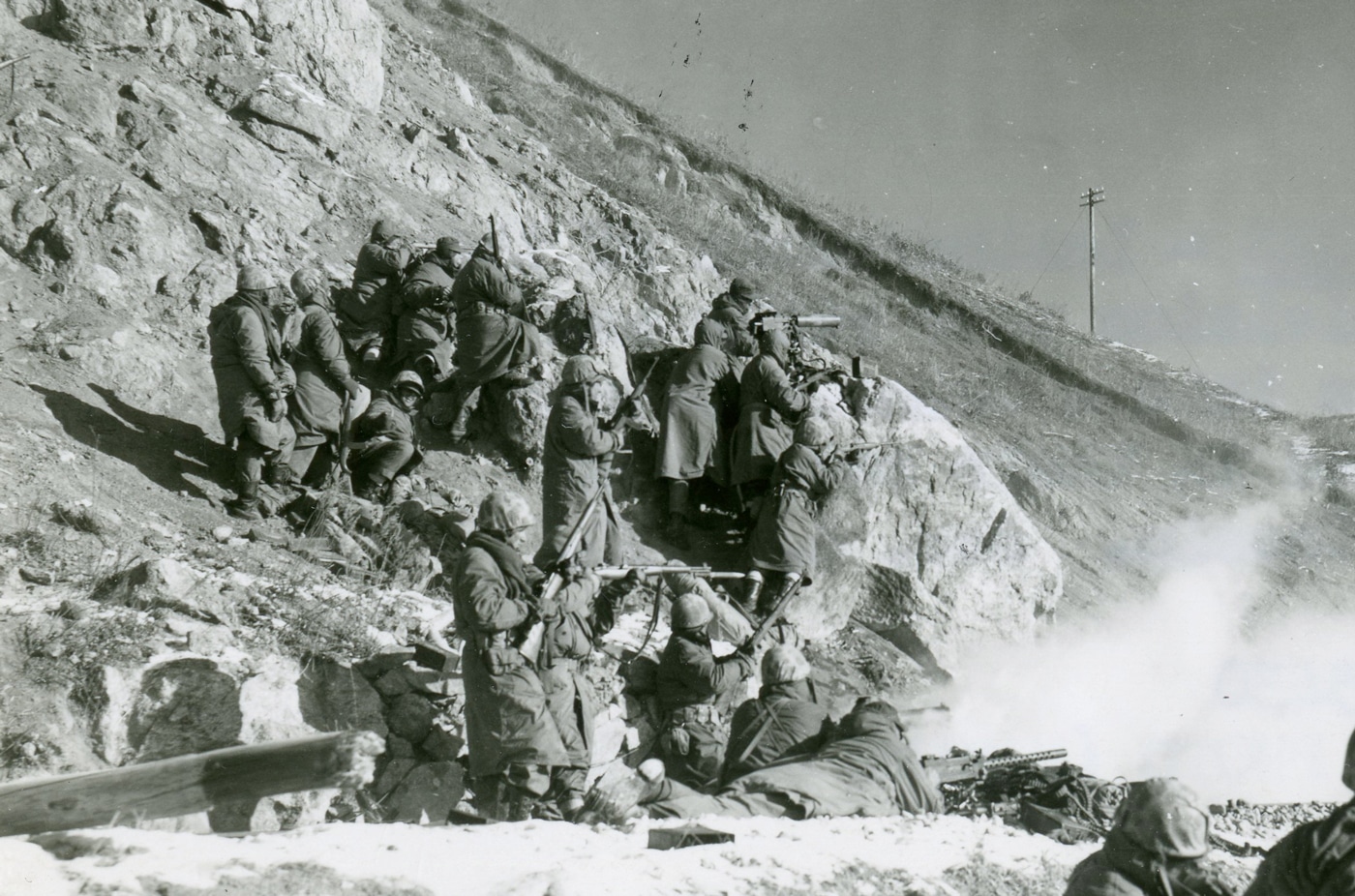
Near Hagaru-ri, Marines pour rifle and machine gun fire into a Chinese Communist road block. Visible areM1 Garands,M1 and M2 Carbines, M1917 and M1919 machine guns. Image: Sgt. F.C. Kerr/U.S.M.C.
You just wanted to warm em up and be sure they worked in that cold.
We had trucks and other vehicles carrying ammo nearby so it wasnt a matter of conserving ammo.
M1911A1 Pistol
I got one when they made me a machine gunner.
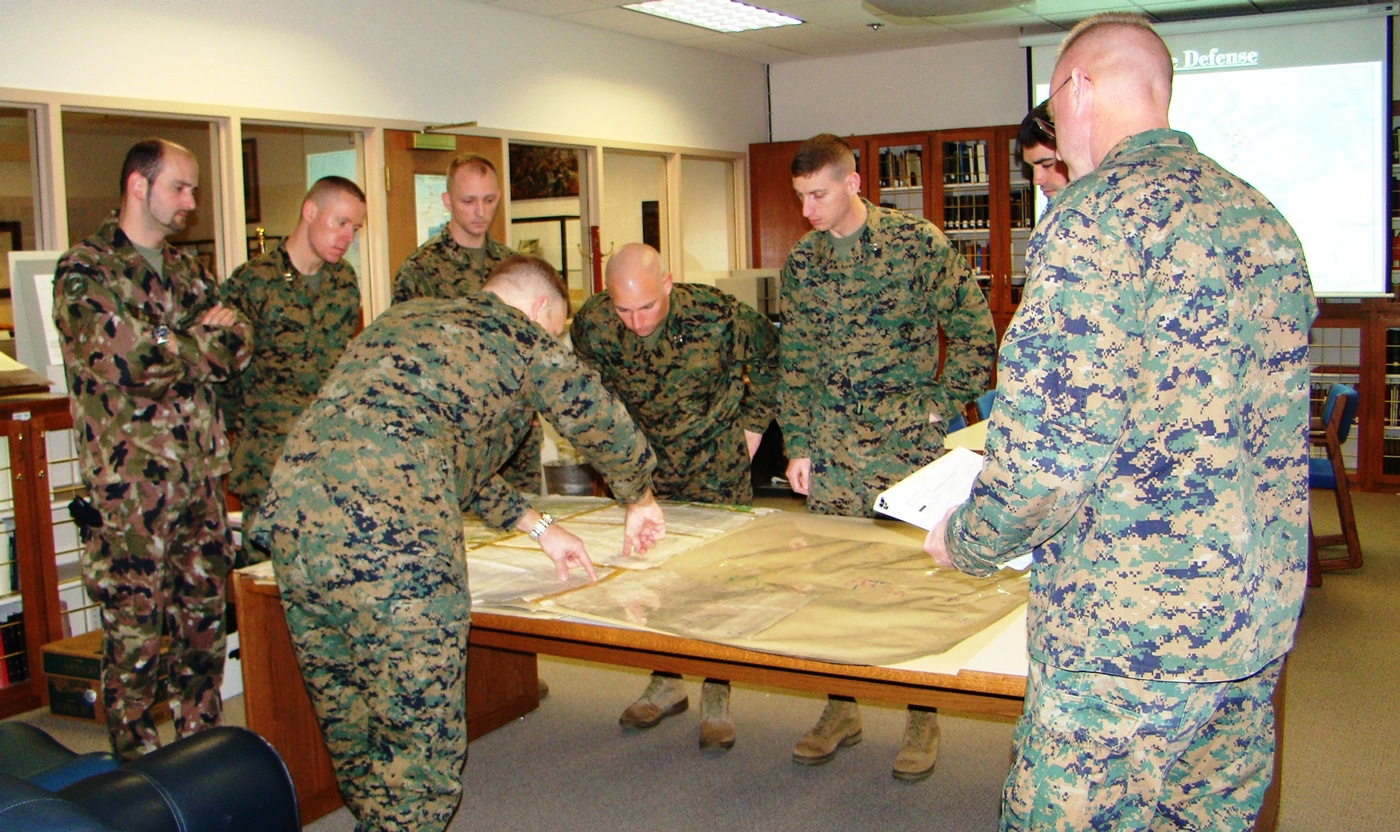
The Battle of Chosin Reservoir is still studied today. These students in the Expeditionary Warfare School study maps of the battle. Image: U.S.M.C.
Id burn a few rounds through it every once in a while to keep it exercised.
Not much good beyond that.
Lots of guys bitched about it being underpowered, but I didnt think so.

American tanks bivouac on the perimeter of Koto-ri in December of 1950. Snow covers the ground and the tanks. Image: U.S.M.C.
Hand Grenades
Carried a lot of them and used a lot of them.
We tended to carry them inside our parkas and jackets.
When it got really cold, frost could build up around the detonators.
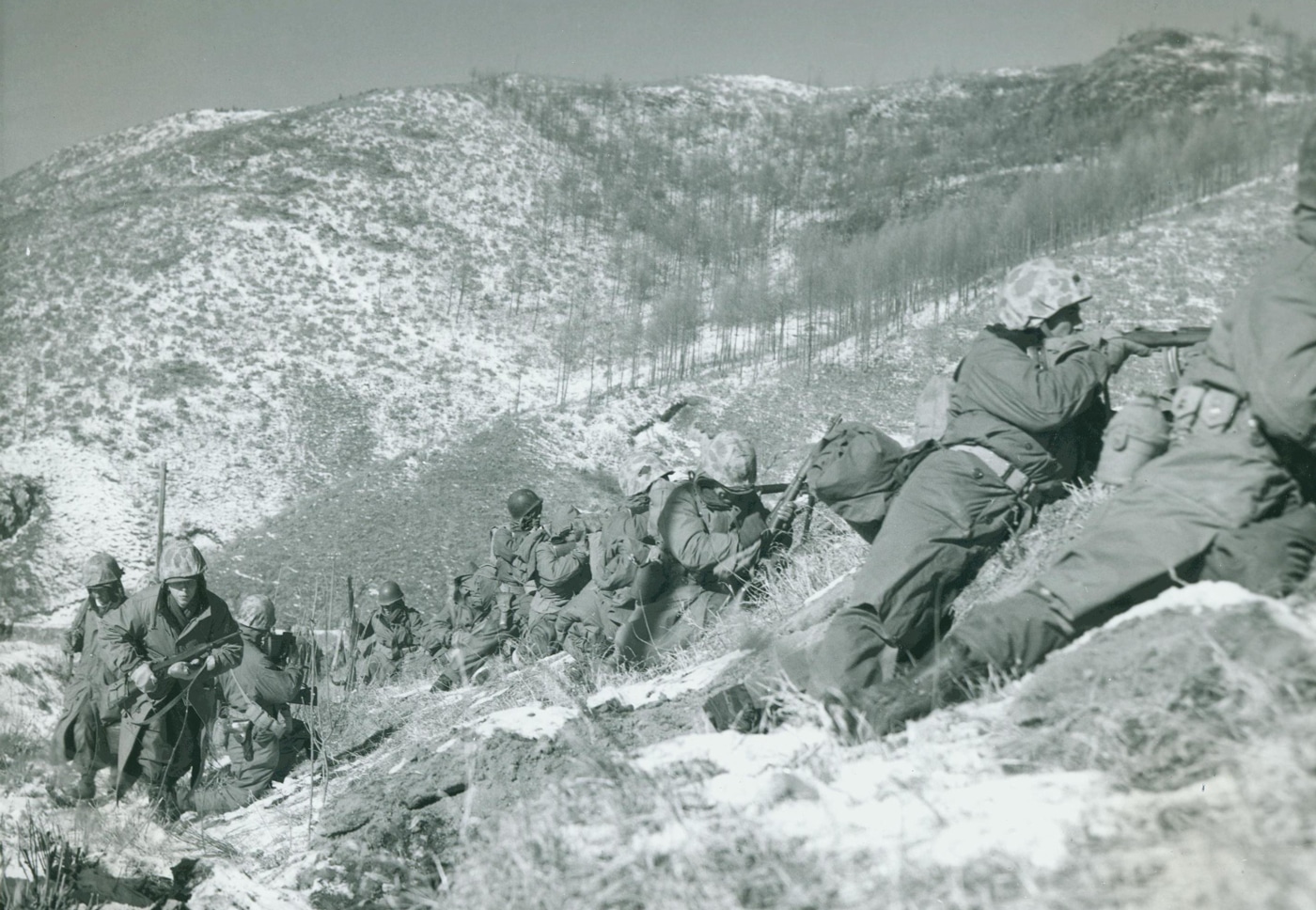
On December 6, 1950, Marine riflemen of RCT-7 move up a ridge to clear it of Chinese troops. Image: U.S.M.C.
We had to wear gloves all the time, so getting a grip on the pin was sometime hard.
And no, we didnt venture to pull a grenade pin with our teeth.
M1919A4 Machine Gun
The air-cooled .30 was a blessing for us.

That machine gun was worth every pound of weight.
Guys complained about the extra weight until they needed that gun in support.
Browning Automatic Rifle
We always had more of them than we rated.
Good weapon even in the cold with all the moving parts if you kept it dry.
Not sure how effective it was.
I know it was a bitch getting to your business with all the layers of clothes we were wearing.
M1 Rifle
That was the war-winner, old reliable.
The M1 was tough, very rugged and reliable even in really cold weather.
The Chinese considered the retreat of U.N. forces a success, but it was a Pyrrhic victory at best.
In the final accounting, they suffered more than three times the number of Americans lost in that fight.
Men like Barry Jones sucked it up and drove on until the bitter stalemate three years later.
A few of those men were still on active duty when I enlisted.
They were revered and insightful instructors who prepared me well for my own combat crucible in Vietnam.
Go to forum thread




